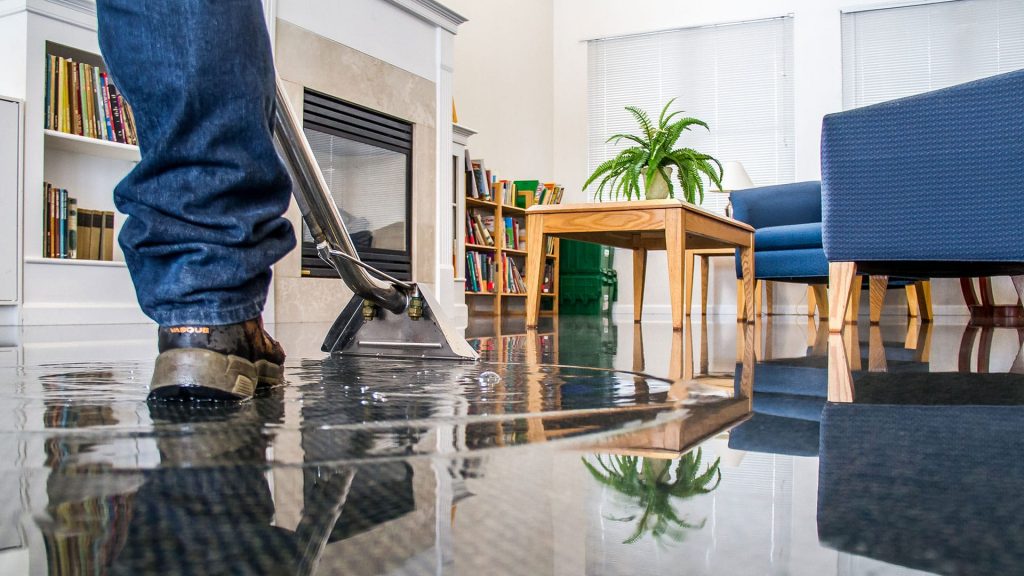Do's and also Don'ts Throughout Water Damage Emergencies.
Do's and also Don'ts Throughout Water Damage Emergencies.
Blog Article
We have stumbled on this article pertaining to Preventing Fires and Water Damage In Your Home listed below on the internet and felt it made sense to talk about it with you over here.

Water provides life, water intrusion on parts where it's not intended to be can result in damage. It can peel away surfaces and deteriorate the foundation if the water saturates into your structure. Mold and mold likewise thrive in a damp atmosphere, which can be unsafe for your wellness. Residences with water damages smell moldy and old.
Water can come from numerous resources such as typhoons, floodings, ruptured pipelines, leakages, and also sewage system issues. In case you experience water damages, it would be great to understand some safety preventative measures. Here are a couple of guidelines on exactly how to deal with water damages.
Do Prioritize Residence Insurance Policy Protection
Water damages from flood because of hefty winds is seasonal. Nonetheless, you can also experience an unexpected flooding when a faulty pipe instantly bursts right into your residence. It would certainly be best to have house insurance policy that covers both disasters such as all-natural tragedies, and also emergency situations like broken plumbing.
Do Not Neglect to Shut Off Energies
In case of a disaster, especially if you reside in a flood-prone area, it would certainly be a good idea to shut off the main electric circuit. This cuts off power to your entire residence, preventing electric shocks when water is available in as it is a conductor. Don't forget to turn off the primary water line shutoff. Furniture will certainly move around and also create damages when floodwaters are high. Having the major shutoff shut down avoids more damage.
Do Stay Proactive and Heed Climate Alerts
Listen to discharge cautions if you live near a river, creek, or lake . Doing so decreases prospective residential or commercial property damage.
Don't Neglect the Roof
Before the weather condition transforms terrible, make sure you have a roofing assessment. In fact, it would be prudent to obtain this service each year as it can mitigate intricate concerns. You can stay clear of rainfall damage if there are no openings as well as leakages in your roof covering. Your roofing professional will additionally look after defective rain gutters or any other signs of weakening. This will certainly stop water from moving down your walls and also saturating your ceiling.
Do Take Note Of Small Leakages
A ruptured pipe does not happen overnight. You may discover bubbling paint, peeling off wallpaper, water streaks, water discolorations, or dripping audios behind the wall surfaces. Have your plumbing repaired prior to it results in substantial damages.
Do Not Panic in Case of a Burst Pipe
Maintaining your clearheadedness is vital in a time of situation. Because it will suppress you from acting quickly, worrying will only compound the trouble. When it comes to water damages, timing is key. The longer you wait, the more damages you can anticipate. Therefore, if a pipeline bursts in your home, instantly shut off your primary water shutoff to remove the resource. Then unplug all electric outlets in the location or switch off the circuit breaker for that part of the house. Ultimately, call a respectable water damages remediation specialist for aid.
Water gives life, water breach on parts where it's not meant to be can result in damages. Homes with water damage odor musty and old.
Water damages from flooding dues to hefty winds is seasonal. You may see bubbling paint, peeling off wallpaper, water streaks, water spots, or trickling sounds behind the wall surfaces. When it comes to water damages, timing is crucial.
Some Do's & Don't When Dealing with a Water Damage
DO:
Make sure the water source has been eliminated. Contact a plumber if needed. Turn off circuit breakers supplying electricity to wet areas and unplug any electronics that are on wet carpet or surfaces Remove small furniture items Remove as much excess water as possible by mopping or blotting; Use WHITE towels to blot wet carpeting Wipe water from wooden furniture after removing anything on it Remove and prop up wet upholstery cushions for even drying (check for any bleeding) Pin up curtains or furniture skirts if needed Place aluminum foil, saucers or wood blocks between furniture legs and wet carpet Turn on air conditioning for maximum drying in winter and open windows in the summer Open any drawers and cabinets affected for complete drying but do not force them open Remove any valuable art objects or paintings to a safe, dry place Open any suitcases or luggage that may have been affected to dry, preferably in sunlight Hang any fur or leather goods to dry at room temperature Punch small holes in sagging ceilings to relieve trapped water (don't forget to place pans beneath!); however, if the ceiling is sagging extremely low, stay out of the room and we'll take care of it DO NOT:
Leave wet fabrics in place; dry them as soon as possible Leave books, magazines or any other colored items on wet carpets or floor Use your household vacuum to remove water Use TV's or other electronics/appliances while standing on wet carpets or floors; especially not on wet concrete floors Turn on ceiling fixtures if the ceiling is wet Turn your heat up, unless instructed otherwise

As a person who reads about 5 Home Safety Tips To Reduce The Risk Of Fire And Water Damage, I imagined sharing that excerpt was really helpful. Those who appreciated our blog post if you please make sure you remember to share it. Thanks a lot for your time. Visit again soon.
Report this page